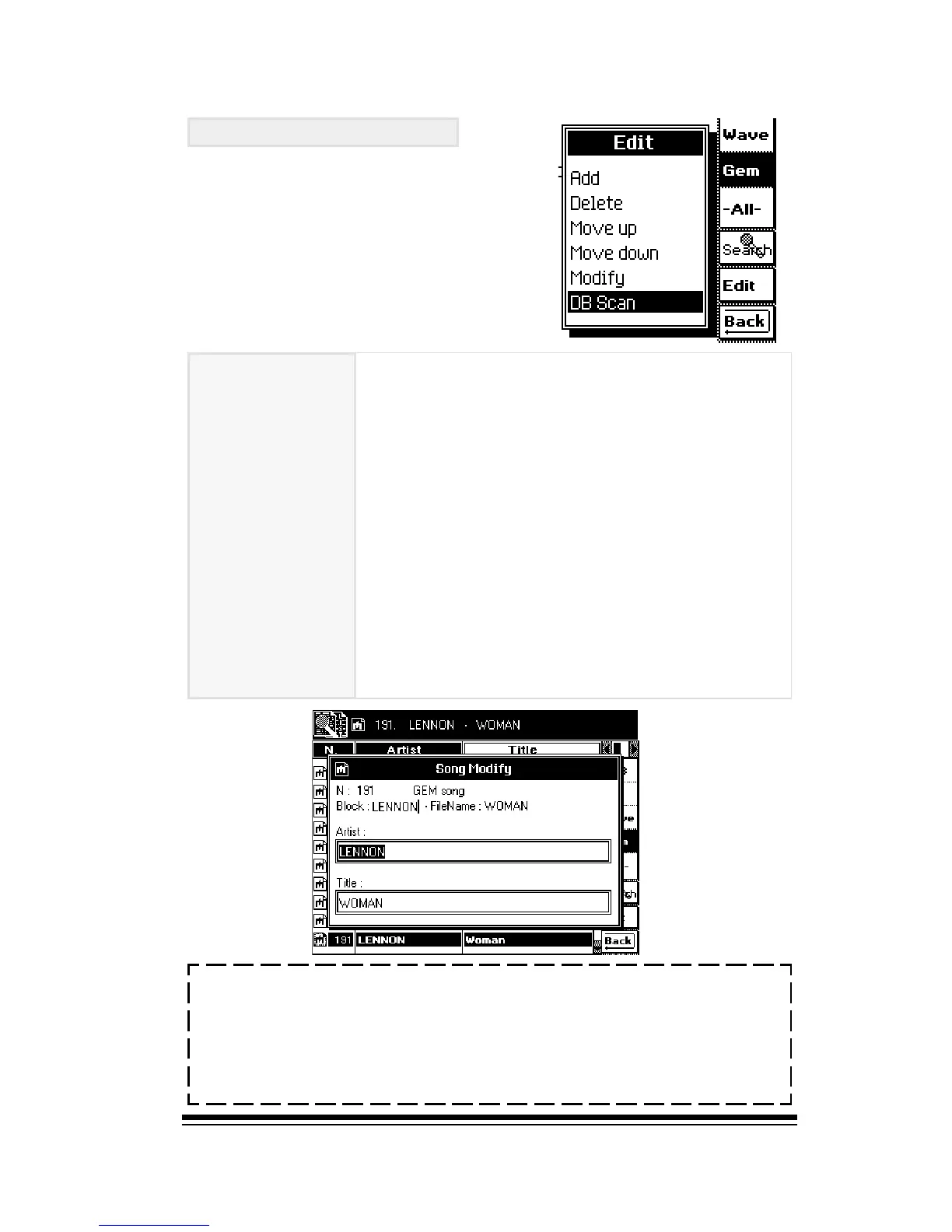Song Player
Page 67
F7 EDIT Functions
The EDIT function of DB List
provides a variety of features which
allow you to modify the nature of
the listing or the list elements.
Note: searching for songs by Artist or Title, the song
number is not important. However, in case you become
accustomed to accessing songs by their numbers, the
Add function will preserve all the existing song numbers
in the database.
Add: Add one or more songs to the database.
It will add your new song(s) to the end o
the current list and number them
accordingly.
Delete: cancel one or more songs in the database.
Move up: move the selected song numerically back
in the list.
Move down: move the selected song numerically
forward in the list.
Modify: lets you modify various song parameters
(number, artist or title).
DB Scan: creates a database from scratch.
